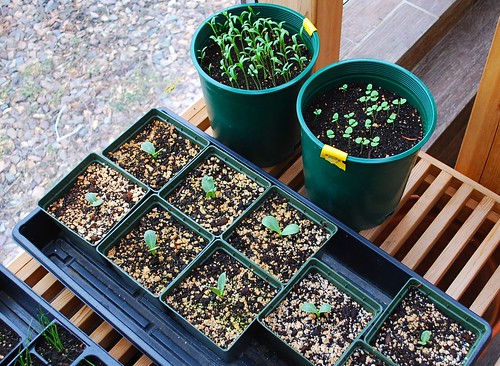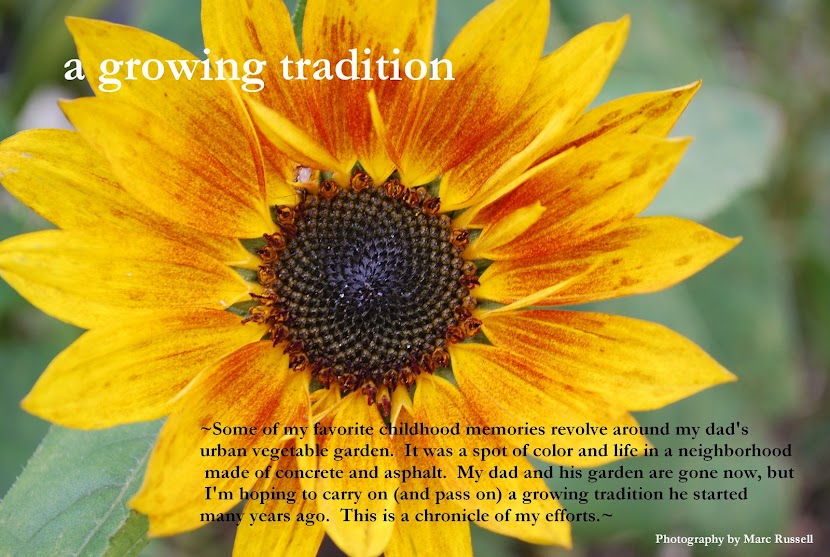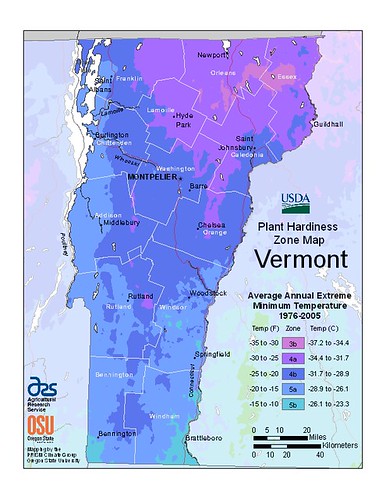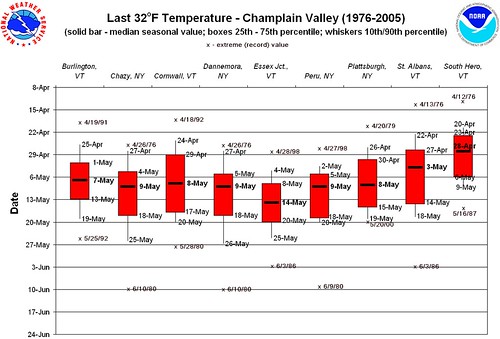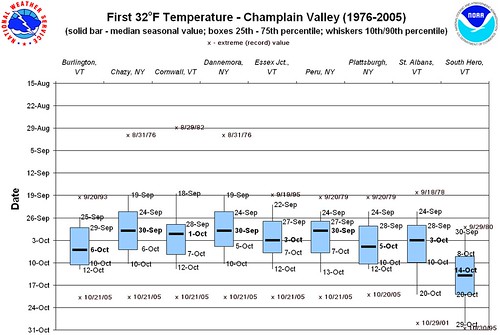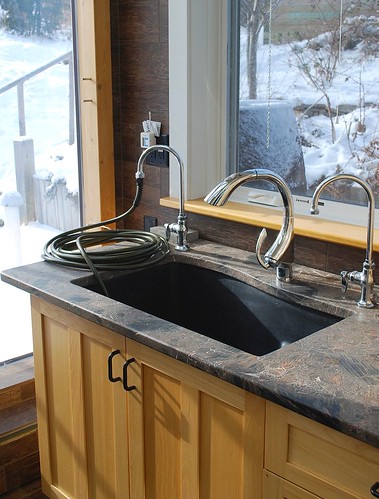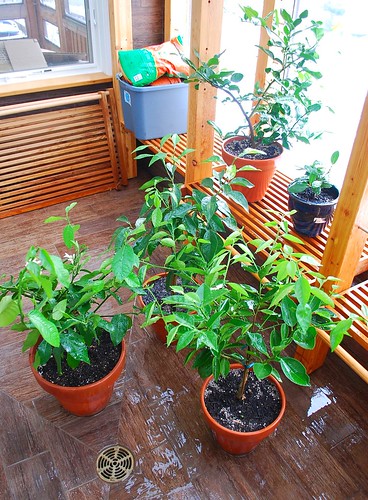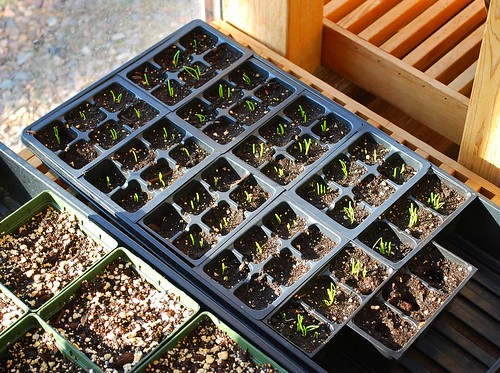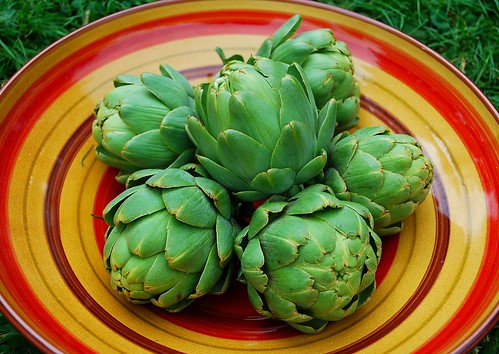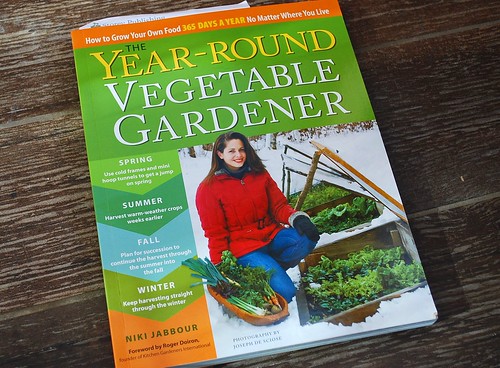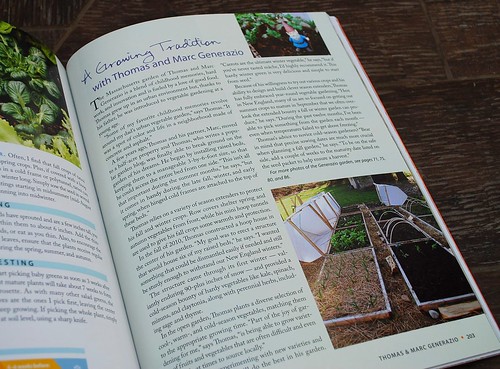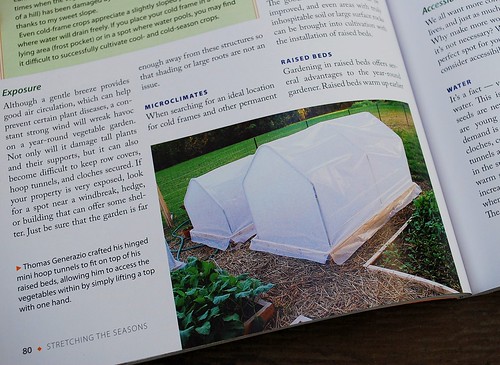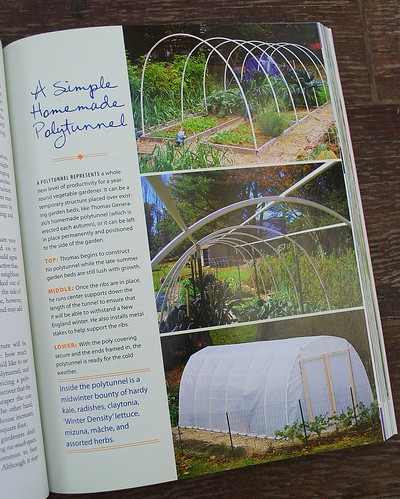
A few days ago, I brought my fig trees up from Massachusetts. For the past 4 months, they have been lying dormant in the garage of our old house. I must admit that I have a lot to learn when it comes to growing fig trees. I bought my trees from
a local (Boston) grower almost two years ago. The first summer, they did well. But last year, they hardly grew at all and what new growth there was was severely stunted. The leaves in particular were much smaller than they were the previous year and the lone fruit that I got never matured. Figs develop on the previous year's growth so I probably won't be getting any fruit again this year.
Last year, I compromised a bit when it came to their care and fertilizer. Essentially, I just left them alone to grow. This year, I'm determined to follow Joe Morle's instructions exactly. After visiting his nursery and seeing all of his lovely healthy fig trees, I can't think of a good reason not to do so.
Once I brought them up here, I decided to place them in the green room to break dormancy now and get a head start on the growing season. If I let them do so naturally outside, I might be waiting until late May at least.

For fun, I decided to take a few cuttings from my dormant trees. I've been doing a lot of reading on how to propagate fig and citrus trees. Plant propagation from cuttings and grafting is definitely on aspect of gardening that I'd like to explore.
Apparently, everyone seems to have their own technique when it comes to rooting fig cuttings. In my case, I decided to severe each cutting just below a node on 2nd year growth. Each cutting is about 6-7 inches long. I then covered them almost entirely with some damp peat moss and placed the container in a clear plastic bag (for added humidity) with a couple of small holes for ventilation. I placed the container in the green room where it stays relatively warm and away from direct sunlight. From what I've read, it should take anywhere from 2 weeks to a month for roots to develop (if they do at all).
Initially, I'd dipped the bottom end of each cutting in some root hormone powder but noticed a couple of days later that fungus was starting to grow on the dipped portion. I've since read that others have observed that root hormone powder seems to facilitate fungus on fig cuttings so I've since rinsed the hormone powder off. Hopefully that helps.
I'm keeping my fingers crossed that they will root. If you have any advice on rooting fig trees, please share!
